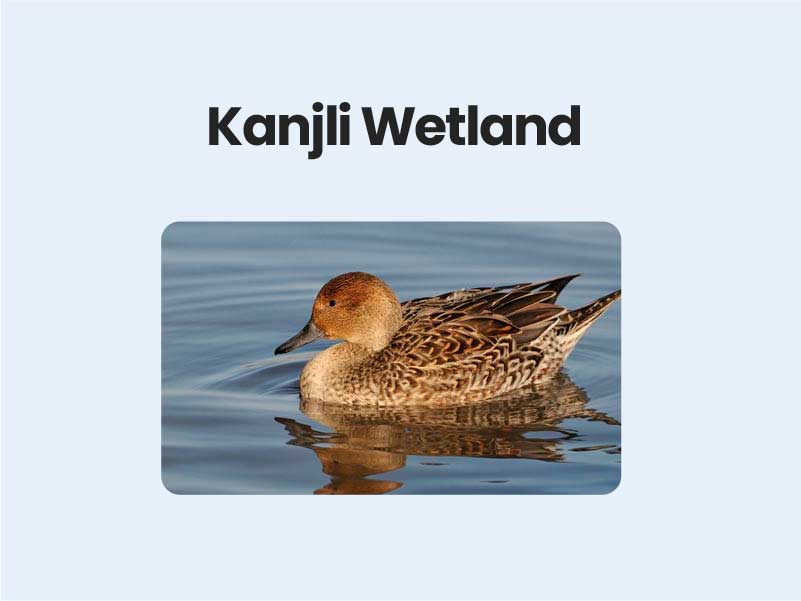Companion@360 → 7 Month programme to sharpen your writing skills → REGISTER NOW

Kanjli Wetland
Kanjli wetlandas Kali Bein Conservation Reserve will pave way for conservation of area which functions as water sponge by recharging ground water and meeting the water requirement for drinking and irrigation purpose for local people.
- Kanjli Wetland was formed in 1870 and declared Ramsar site in 2002. It is located on the Bein rivulet.
- This Wetland a reservoir spreading over 490 acres is home to multiple species of birds including night heron common Moorrthan, Pond heron, purple swanphen and white breasted kingfisher. It is a very popular site for bird watching and boating.
- The new status will help for protection of many flora and fauna species which are facing survival battle in this habitat.
- Kanjli is upstream of Harike wetland located in the Beas river basin.
- It is said that the erstwhile Maharaja of Kapurthala, Raja Randhir Singh, built the head regulator on the river Kali Bein, a tributary of Beas river to provide irrigation facility to local people, in year 1870.
- The headworks resulted into creation of Kanjli wetland, which also subsumes the Kanjli lake.
- Kali Bein feeds the Kanjli wetland which once used to be the habitat of ghariyal, critically endangered species.
- Since the state government has already introduced ghariyal in Harike water system which is ecologically quite similar to Kanjli .
View this post on Instagram
- Thus the wildlife department is now considering Kanjli wetland as alternative site for reintroduction of ghariyal in near future.
- “There is 26 hectare of forest area created along the Kali Bein which provides an excellent habitat for both flora and fauna.
- This includes variety of plant communities Obligate Hydrophytic to Obligate Xerophytic found in the area.
- Incidentally, it is the only wetland in the Punjab which supports population of unique insectivore’s plant known as Utricularia Australis or Yellow Bladderworts.
- The Conservation reservewill ensure survival of many such unique species. This includes those who are not directly dependent on wetland.
- Like bat colonies roosting on peripheries are common sight in the wetland.
- Flying Fox, one of the bat species, which has been slotted in the category of Near Threatened by International Union of Conservation of Nature (IUCN), will benefit from the new enhanced status,” .
Read Also Keoladeo National Park
